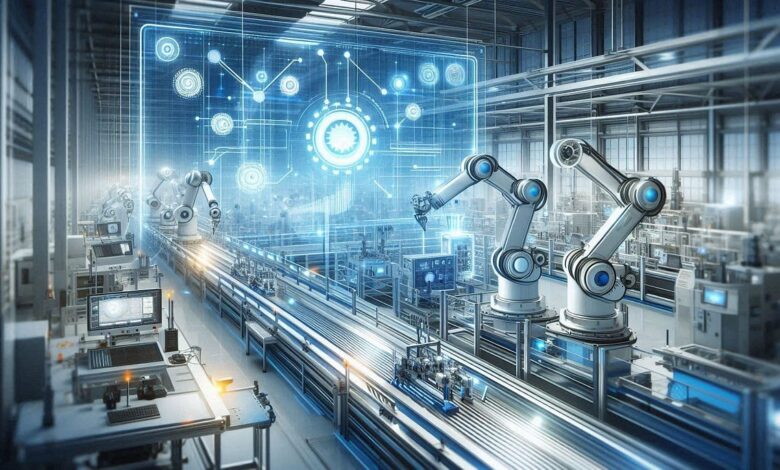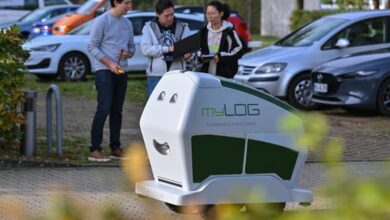Robotics in Manufacturing: Increasing Productivity and Safety | by Emperor Brains | Jun, 2024

In today’s fast-paced industrial landscape, the integration of robotics in manufacturing has revolutionized production processes, boosting productivity and enhancing workplace safety. This technological evolution has become a cornerstone for many industries, enabling companies to streamline operations, reduce costs, and improve overall efficiency. At Emperor Brains, we recognize the transformative impact of robotics in manufacturing and are committed to leveraging these advancements to deliver top-notch solutions for our clients. Visit us at https://emperorbrains.com/ to learn more about our services.
The journey of robotics in manufacturing dates back several decades, but it has seen exponential growth in recent years. Initially, robots were primarily used for simple, repetitive tasks. However, advancements in artificial intelligence (AI), machine learning, and sensor technology have significantly expanded their capabilities. Modern robots are now equipped with sophisticated algorithms and sensors, enabling them to perform complex tasks with precision and adaptability.
- Industrial Robots: These are the most common type of robots used in manufacturing. They are typically used for tasks such as welding, painting, assembly, and material handling. Industrial robots are designed for high-speed, high-precision operations, making them ideal for mass production.
- Collaborative Robots (Cobots): Unlike traditional industrial robots, cobots are designed to work alongside human workers. They are equipped with advanced sensors and safety features to prevent accidents and injuries. Cobots are increasingly being used for tasks that require a high degree of flexibility and human-robot interaction.
- Autonomous Mobile Robots (AMRs): AMRs are used for transporting materials and products within a manufacturing facility. They use sensors, cameras, and AI to navigate and avoid obstacles. AMRs are highly adaptable and can be easily reprogrammed for different tasks.
- Articulated Robots: These robots have rotary joints and can perform a wide range of tasks with a high degree of flexibility. They are commonly used for assembly, welding, and material handling.
- SCARA Robots: Selective Compliance Articulated Robot Arms (SCARA) are used for tasks that require precise lateral movements. They are ideal for assembly, packaging, and palletizing.
- Increased Productivity: Robots can operate 24/7 without fatigue, significantly increasing production rates. They can perform repetitive tasks faster and more accurately than human workers, reducing cycle times and boosting output.
- Enhanced Quality: Robots are capable of performing tasks with high precision and consistency, reducing errors and improving product quality. This results in fewer defects and higher customer satisfaction.
- Cost Savings: While the initial investment in robotics can be substantial, the long-term savings are significant. Robots reduce labor costs, minimize waste, and increase efficiency, leading to lower production costs.
- Improved Safety: Robots can take on hazardous tasks, reducing the risk of injuries to human workers. This is particularly important in industries such as chemical manufacturing, where exposure to harmful substances is a concern.
- Flexibility and Scalability: Modern robots are highly adaptable and can be reprogrammed for different tasks. This makes it easy for manufacturers to scale their operations and respond to changing market demands.
- Automotive Industry: The automotive industry has been a pioneer in adopting robotics. Robots are used for tasks such as welding, painting, assembly, and quality inspection. The use of robotics has significantly improved production rates and product quality in this sector.
- Electronics Manufacturing: In electronics manufacturing, robots are used for assembling components, soldering, and testing. The precision and speed of robots are crucial for producing complex electronic devices.
- Food and Beverage Industry: Robots are used for packaging, palletizing, and quality inspection in the food and beverage industry. They help maintain hygiene standards and increase production efficiency.
- Pharmaceutical Industry: In pharmaceutical manufacturing, robots are used for tasks such as mixing, filling, and packaging. They help ensure precision and consistency, which are critical in this industry.
- Metal Fabrication: Robots are used for welding, cutting, and material handling in metal fabrication. They improve accuracy and reduce the risk of injuries in this hazardous industry.
While the benefits of robotics in manufacturing are clear, there are also challenges that need to be addressed:
- Initial Investment: The cost of acquiring and implementing robotic systems can be high. However, the long-term savings and increased productivity often justify the initial expense.
- Technical Expertise: Implementing and maintaining robotic systems requires specialized knowledge and skills. Manufacturers need to invest in training their workforce or hiring skilled professionals.
- Integration with Existing Systems: Integrating robots with existing manufacturing systems and processes can be complex. It requires careful planning and coordination to ensure seamless operation.
- Workforce Impact: The adoption of robotics can lead to concerns about job displacement. It is important for manufacturers to address these concerns by reskilling and upskilling their workforce to work alongside robots.
The future of robotics in manufacturing is promising, with continuous advancements in technology. Here are some trends to watch for:
- AI and Machine Learning: The integration of AI and machine learning will enable robots to perform even more complex tasks and make decisions in real-time. This will further enhance their capabilities and efficiency.
- Human-Robot Collaboration: The development of more advanced cobots will facilitate closer collaboration between humans and robots. This will lead to safer and more efficient workplaces.
- IoT and Industry 4.0: The Internet of Things (IoT) and Industry 4.0 technologies will enable better connectivity and communication between robots and other manufacturing systems. This will improve data collection, analysis, and decision-making processes.
- Advanced Sensors and Vision Systems: The use of advanced sensors and vision systems will enhance the ability of robots to perceive and interact with their environment. This will improve their accuracy and adaptability.
- Sustainability: Robotics will play a key role in achieving sustainable manufacturing practices. They can help reduce waste, improve energy efficiency, and enable the production of eco-friendly products.
The integration of robotics in manufacturing is not just a trend; it is a revolution that is reshaping the industry. By adopting robotic technologies, manufacturers can achieve unprecedented levels of productivity, quality, and safety. At Emperor Brains, we are at the forefront of this revolution, providing cutting-edge solutions to help our clients stay competitive in a rapidly evolving market.
Our team of experts is dedicated to delivering customized robotic solutions that meet the unique needs of each client. Whether you are looking to automate your production line, enhance product quality, or improve workplace safety, we have the expertise and experience to help you succeed.
Visit our website at https://emperorbrains.com/ to learn more about our services and how we can help you leverage the power of robotics to achieve your manufacturing goals.
Emperor Brains is committed to driving innovation and excellence in manufacturing. Together, let’s build a brighter, more productive, and safer future.



